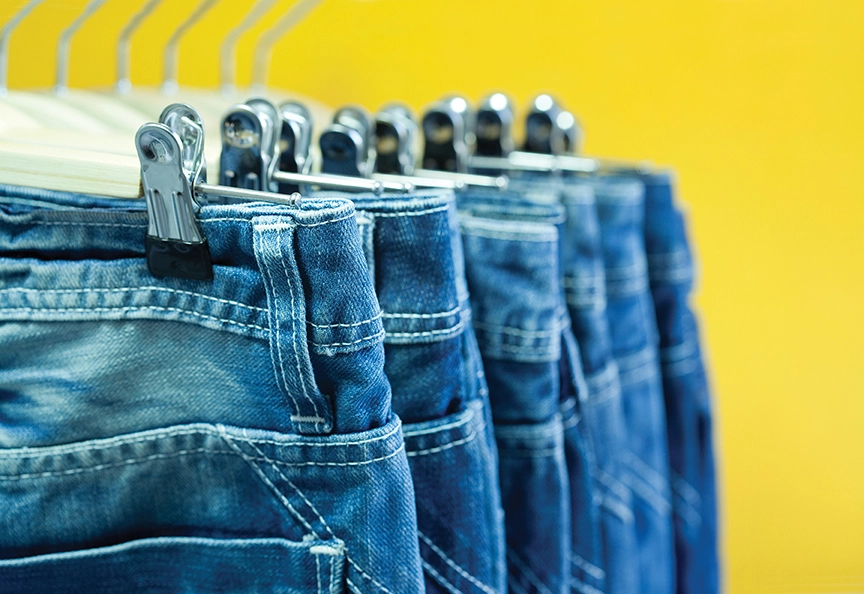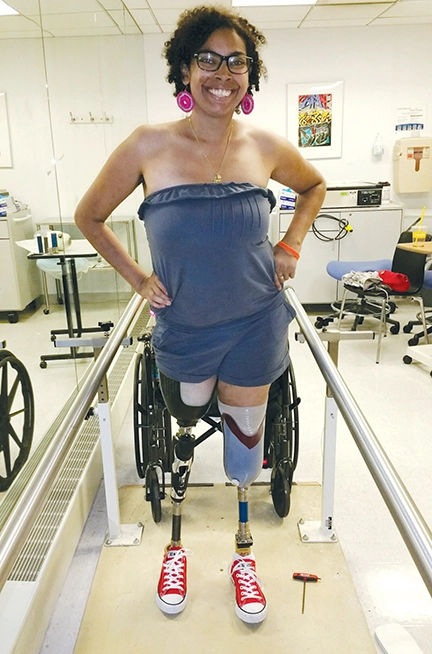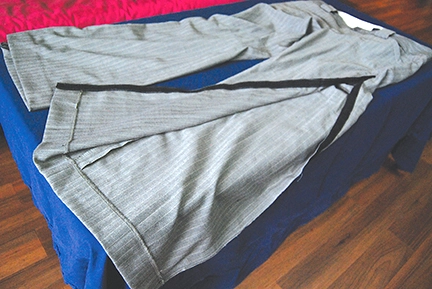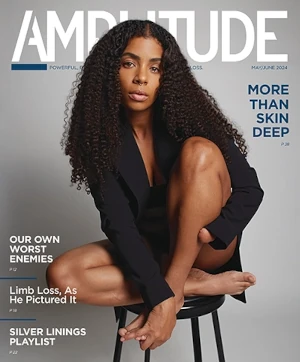By Abbey Smith
There’s an old saying: “If you look good, you feel good.” For one amputee, that couldn’t be truer.

After developing a rare blood clotting disorder, Eman Rimawi underwent 11 surgeries that eventually resulted in the loss of both her legs in 2014.
“It was an intense time,” she says. “I was fine after losing my right leg [below the knee], but after losing my knee, it became real. Then my left leg started to bother me and it was amputated below the knee. I went through a depression, and my friends and family didn’t know how to help me.”
Adding to her struggle, Rimawi, 31, soon realized it was difficult to wear the clothes she loved. In particular, she couldn’t move her knee to maneuver her leg through pants. If she tried putting her pants on first, then she couldn’t properly attach her prostheses. What had once been a simple part of her day now seemed impossible. As a result, she was confined to wearing shorts, leggings, and other items that didn’t always reflect her self-described style as a combination of “chill, urban chic, and girlie.”
“It just felt weird,” Rimawi says. “I didn’t have my legs, I couldn’t wear what I wanted, and I just didn’t feel good about myself.”

Courtesy of C. Jasmine Moore.
Determined to find a solution, she began researching clothing adapted for amputees only to realize her fashion options were limited to styles that didn’t fit her personality. She also found that not everything was adaptable for people who have difficulties fastening zippers or buttons.
That’s when she decided to start altering her own clothing. She experimented with several pairs of pants before perfecting her technique, which involves ripping the side seams of pants and then applying Velcro as a fastener. It wasn’t long before she had reconfigured her wardrobe to meet her needs.
“It took a little while to figure out how to alter my clothes just right,” she says. “It’s great knowing I can still look good without having to compromise.”
Rimawi realized that she probably wasn’t the only person in search of stylish, adaptable clothing. This led her to create Amped Up, a Brooklyn, New York-based fashion line for amputees that creates apparel that’s fashionable and functional.
Her current collection includes sweat pants, suit pants, dress pants, jeans, and cargo pants that can be opened all the way to the top of the leg and then fastened with Velcro. This allows people to easily attach their prosthetic limbs after they’ve put on their pants. Rimawi says the designs are well suited for people with above-the-knee or hip-level amputations or anyone else who has difficulty wearing traditional pants due to physical limitations.
“Trying to be social after an amputation is hard enough,” she says. “Not being able to wear your clothes—the things you feel comfortable in—can make it even more difficult. I hope my clothing makes amputees feel good and gives them extra confidence.”
In addition to showcasing her collection in several fashion shows in 2015, Rimawi is working on a line of shirts and tops designed for arm amputees that’s scheduled to debut later this year. She’s also in the process of applying for grants to fund the production of her clothing for commercial sale with a long-term goal of making it available to people around the world.

“I never thought I’d be doing a fashion line,” she says. “It’s been a lot of work, but well worth it. I’m trying to bring more awareness to my line while staying connected with what people need and want.”
While her clothing line isn’t yet available for purchase, she offers alterations to existing clothes. For those interested in altering their own clothing, Rimawi says the key is to have an open mind and try new things.
“You’ll never know what will work if you don’t give it a try,” she says. “Try new clothes. Try new designs. Just experiment until you find what works best for you.”
Rimawi is looking for amputees in the greater New York City area who are interested in modeling her clothing line in up-coming fashion shows. For more information, e-mail her at emanrimawi@gmail.com.
Sewing 101: The Basics
Want to modify your wardrobe, but not sure where to start? Read these tips from Janet James, a professional seamstress who has nearly 50 years of experience sewing, tailoring, and altering everything from casual apparel and men’s suits to bridal gowns and costumes.
“The best way to become an accomplished seamstress is practice,” James says. “Be patient, follow instructions, and always iron your fabric after each step. These steps make a remarkable difference in your finished piece.”
- Search online for “sewing basics,” and you’ll find hundreds of tutorials. Your library is another great resource to find books such as Vogue Sewing, Revised and Updated that will teach you everything you need to know to make, mend, and alter garments.
- In addition to a well-lit workspace, you’ll want high-quality materials to ensure the best results. For example, cheap thread breaks easily and is prone to shrinkage, which causes fabric to pucker. Here are a few essentials to keep handy:
• sewing scissors that are only used for cutting fabric
• sewing needles
• thread
• straight pins and pin
• cushion
• seam ripper
• tape measure
• fabric marker or pencil
• steam iron and padded ironing board - Before ripping apart your essentials, practice with old clothing. Pay attention to the way things are assembled as you rip apart seams. This will help you during reassembly.
- A good sewing machine is a must. You don’t need a pricey, top-of-the-line machine, but you also don’t want an unreliable machine that produces frustration and poor-quality results.



